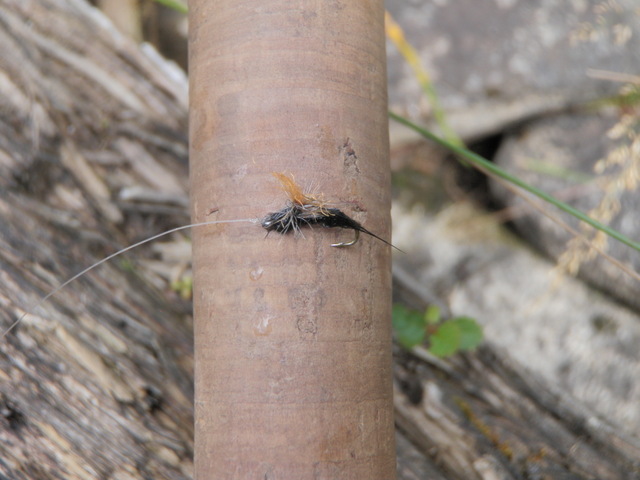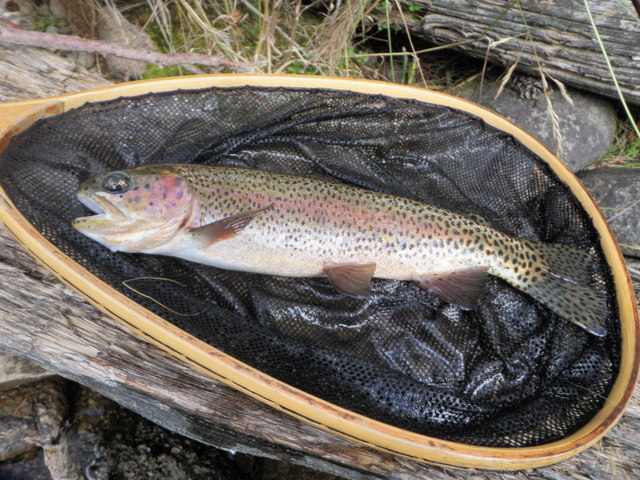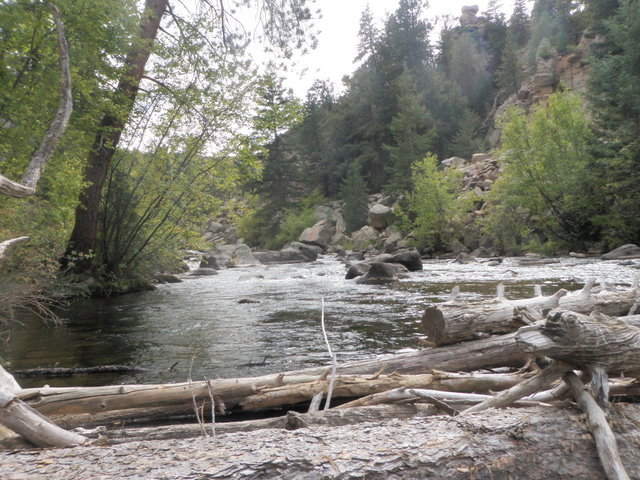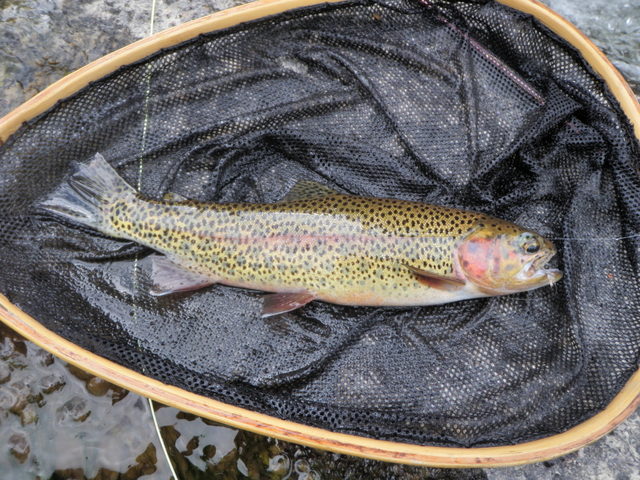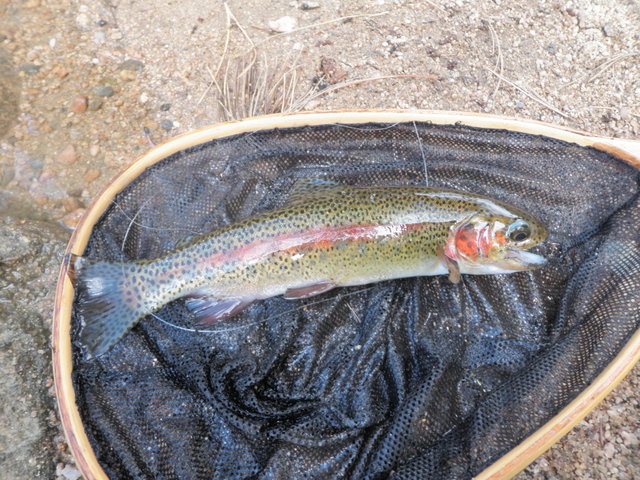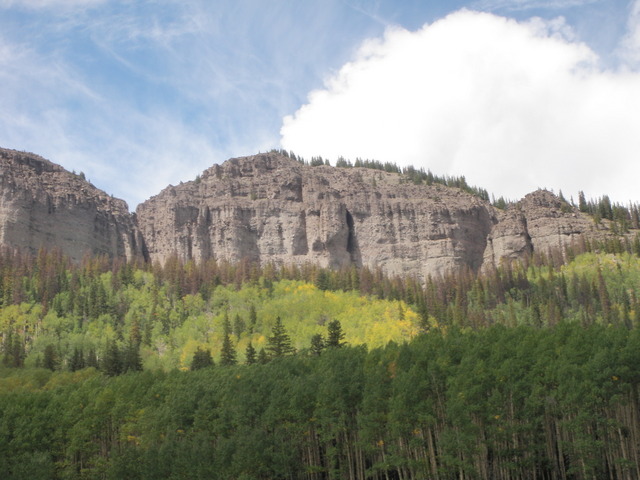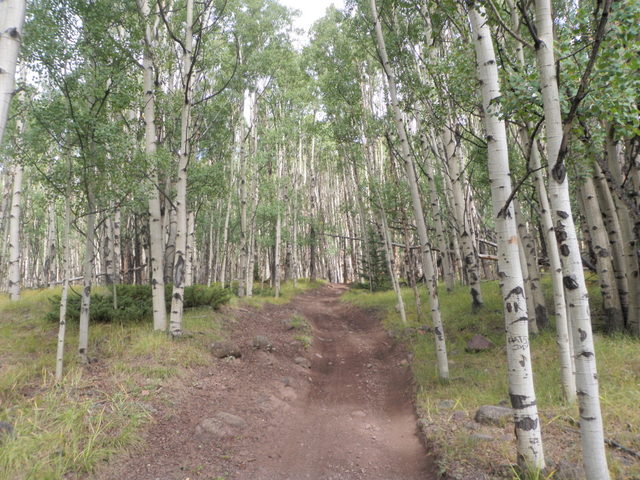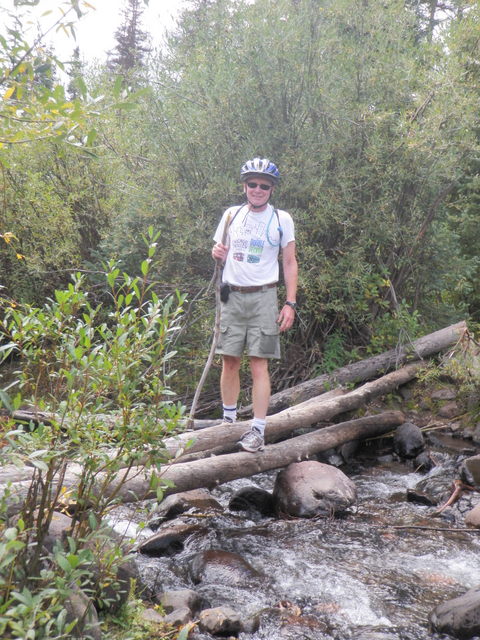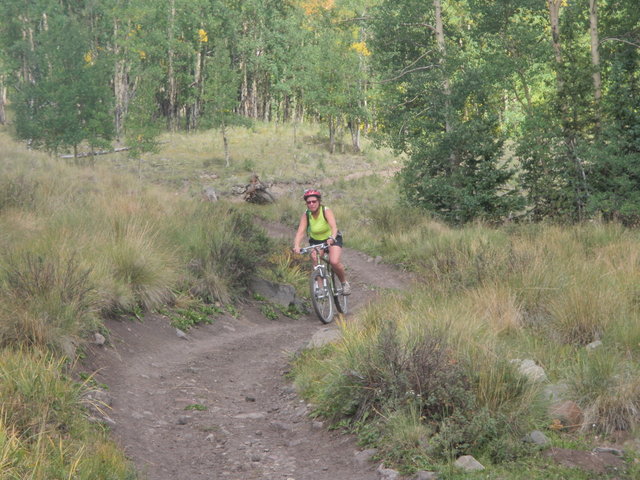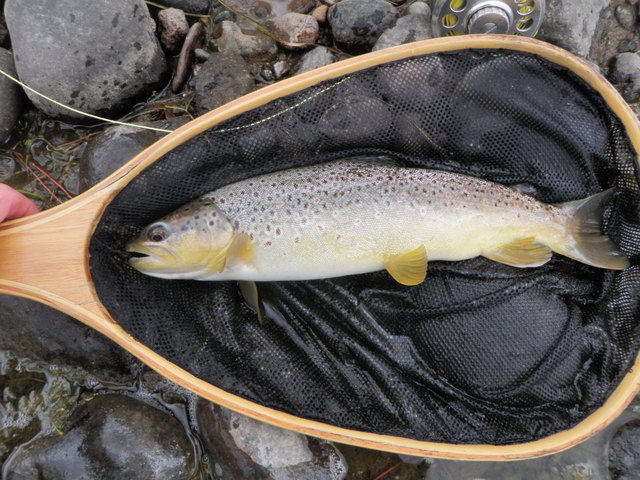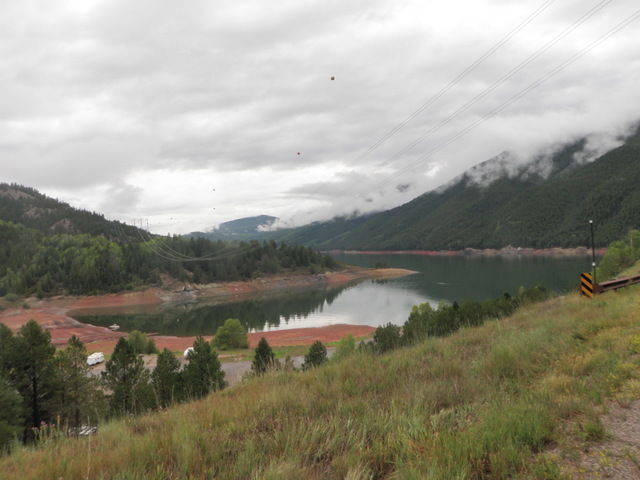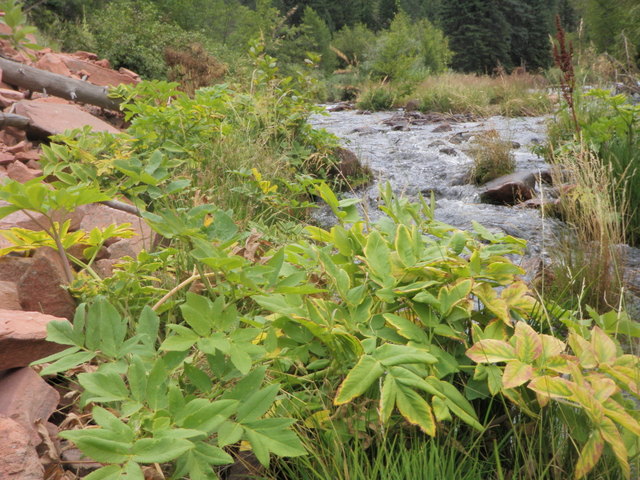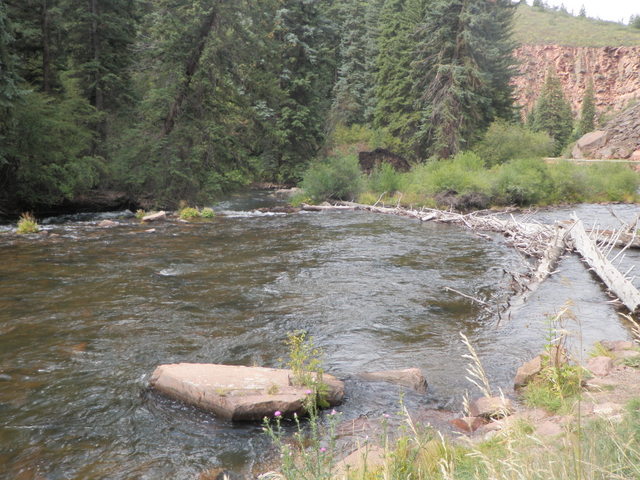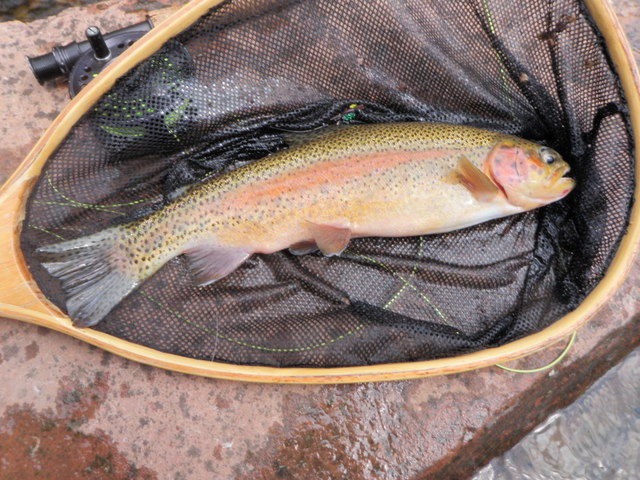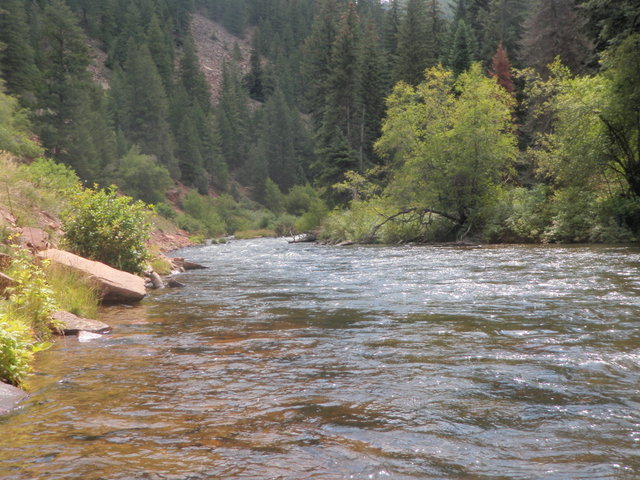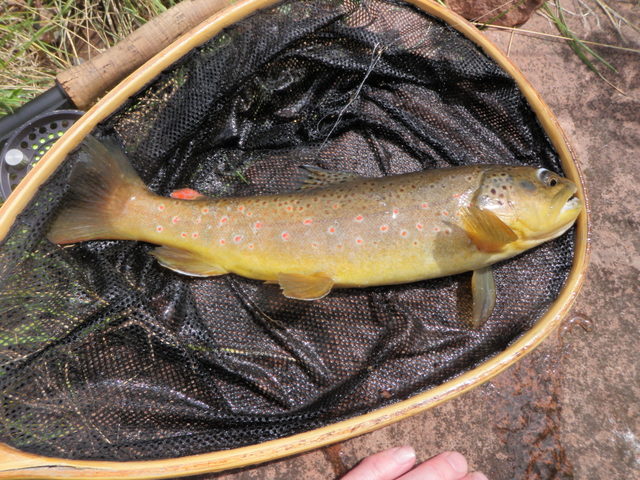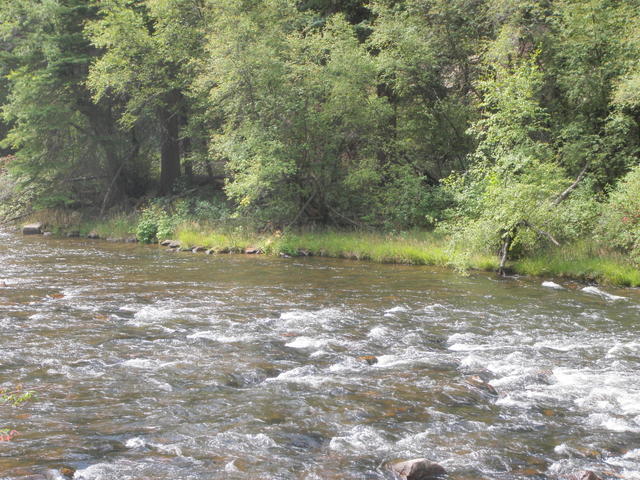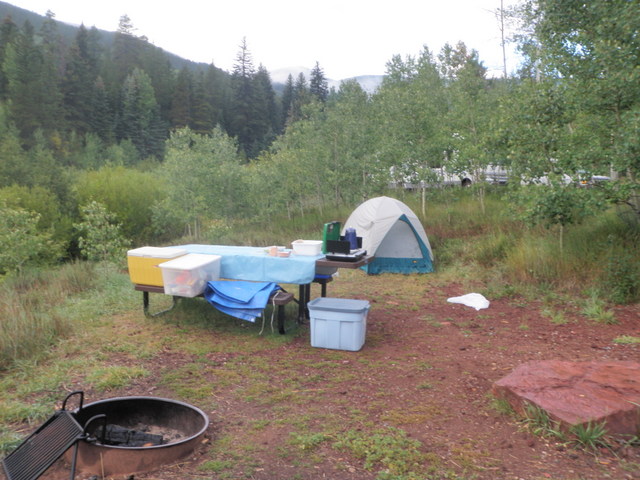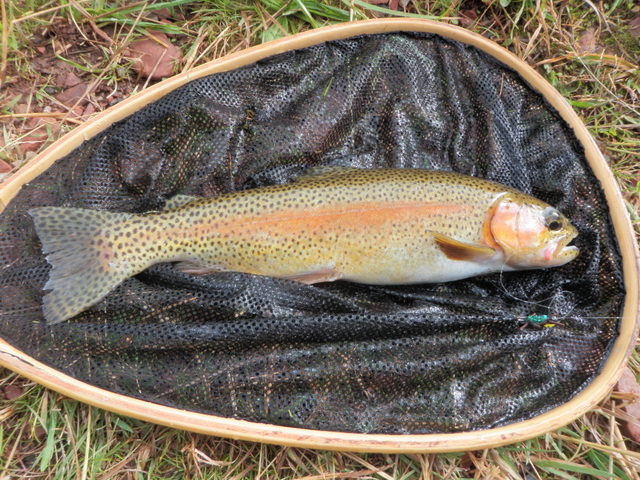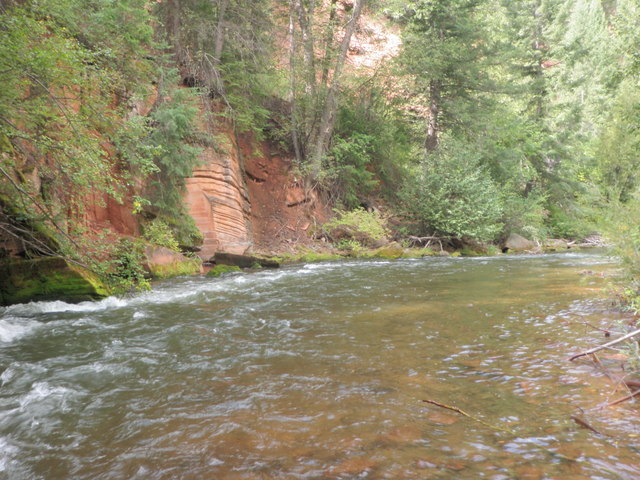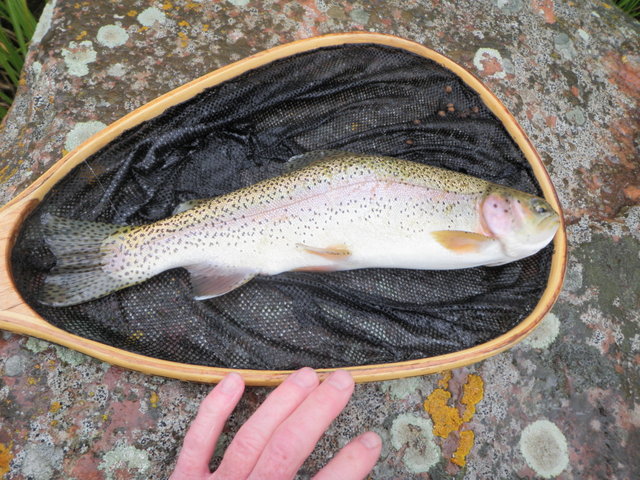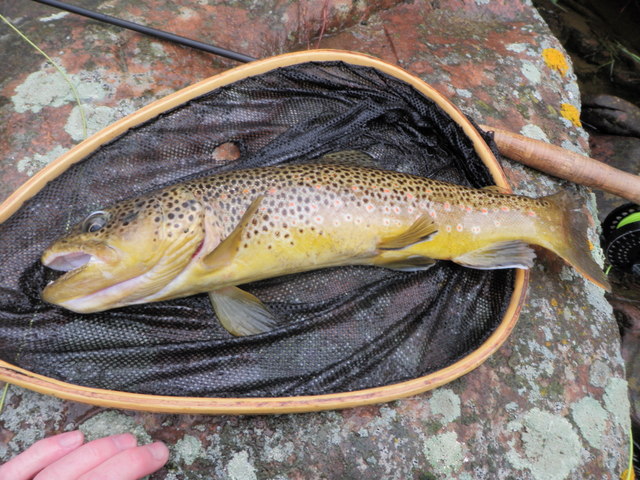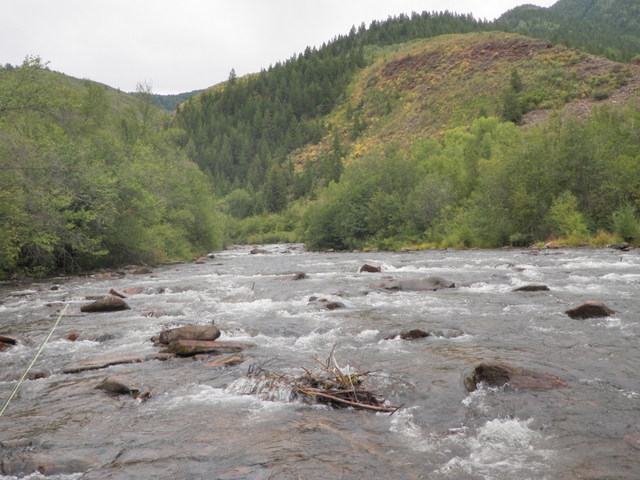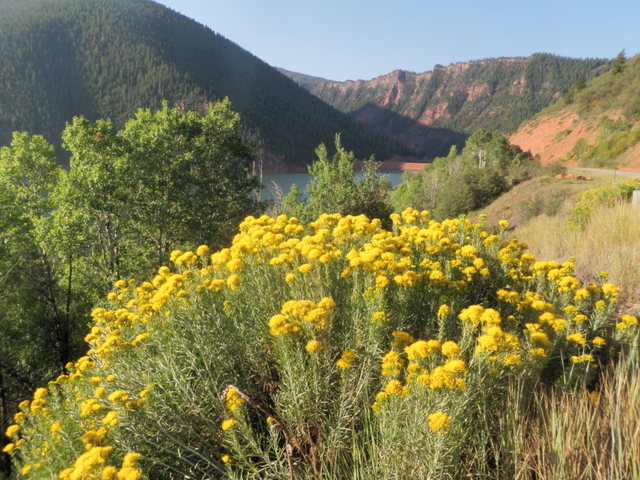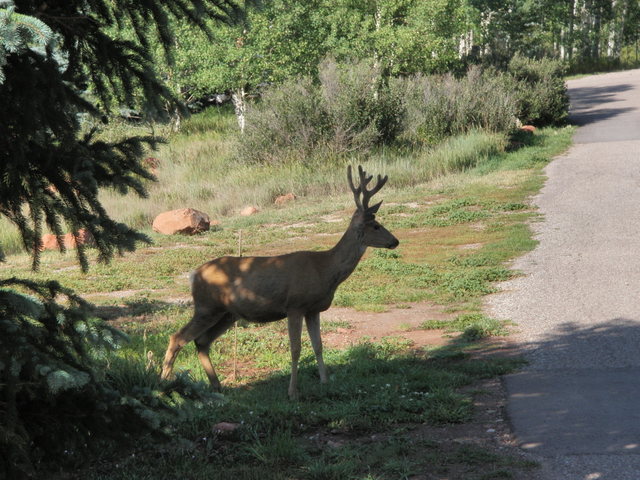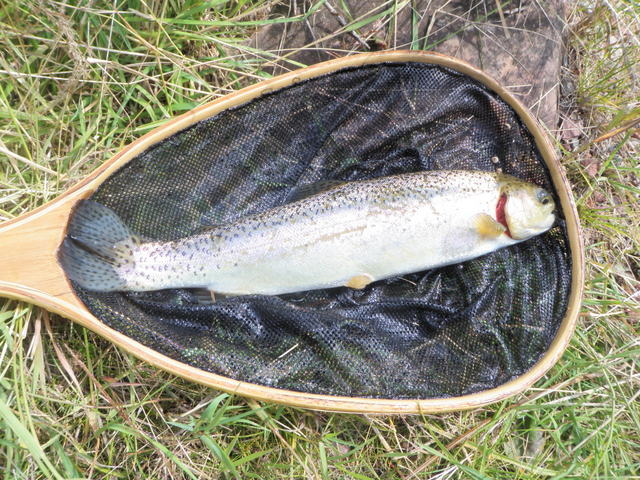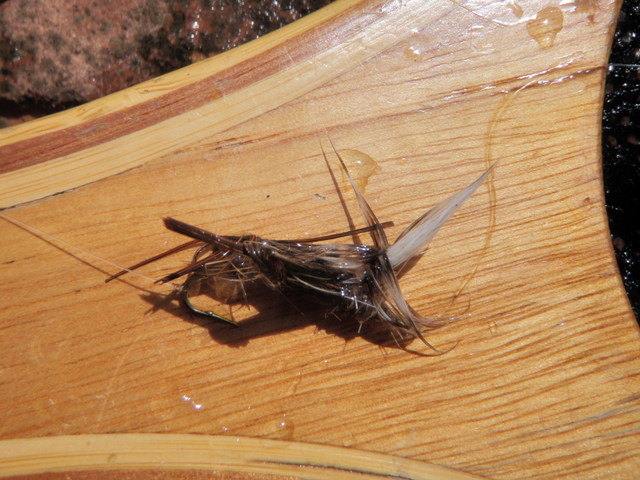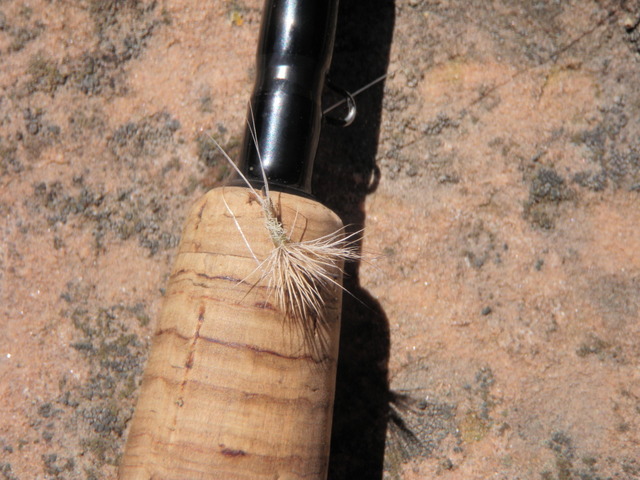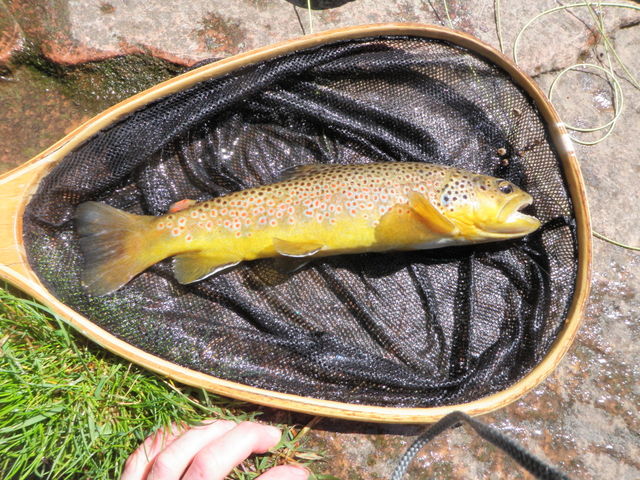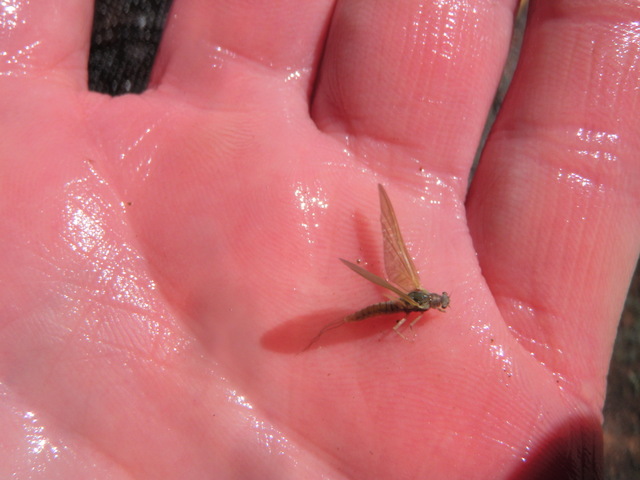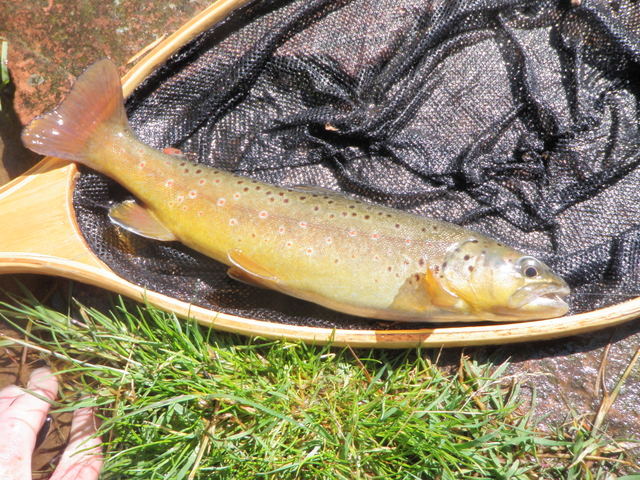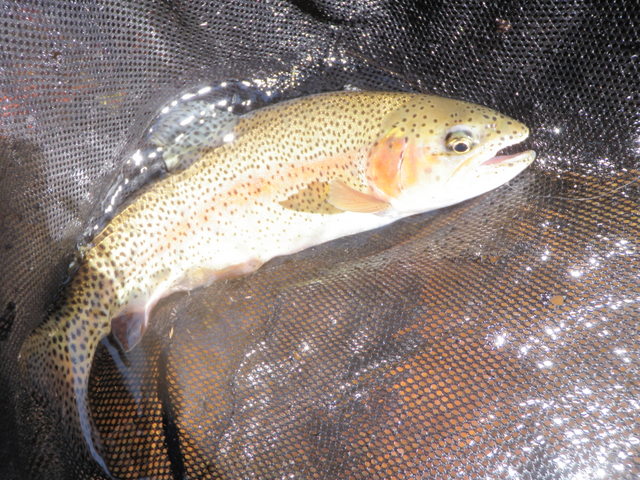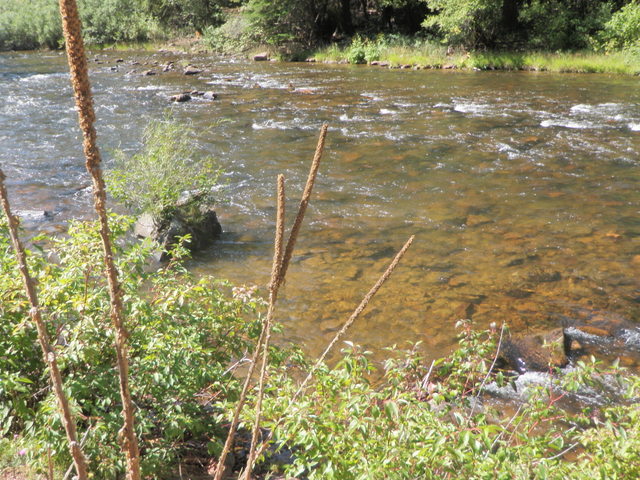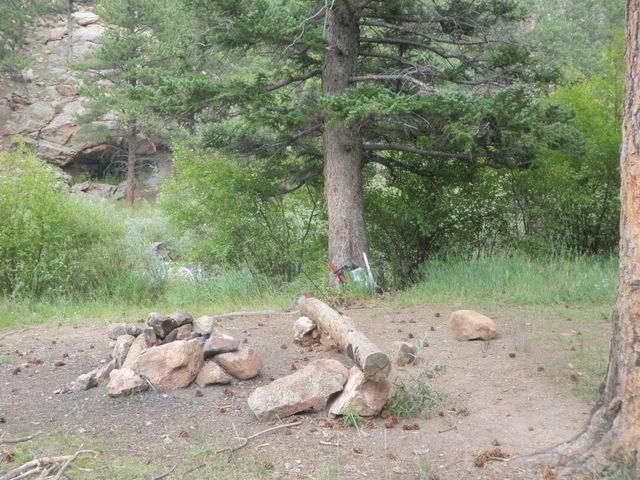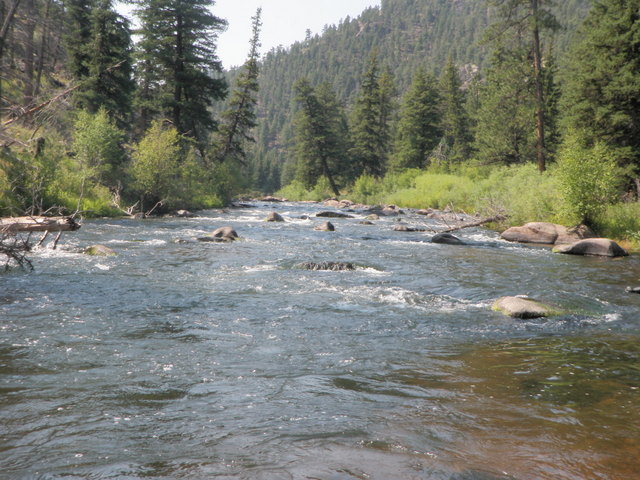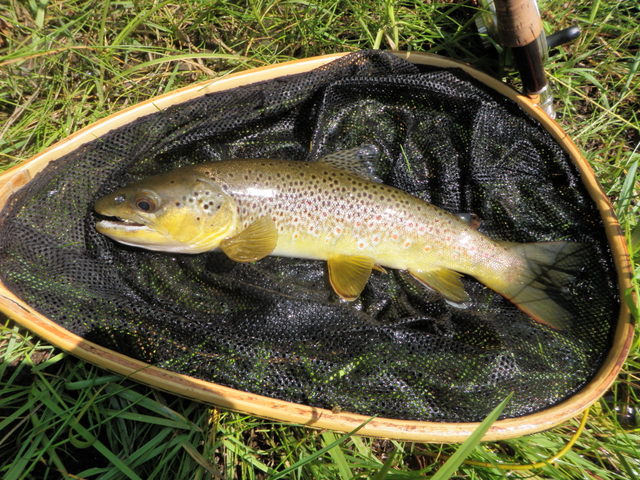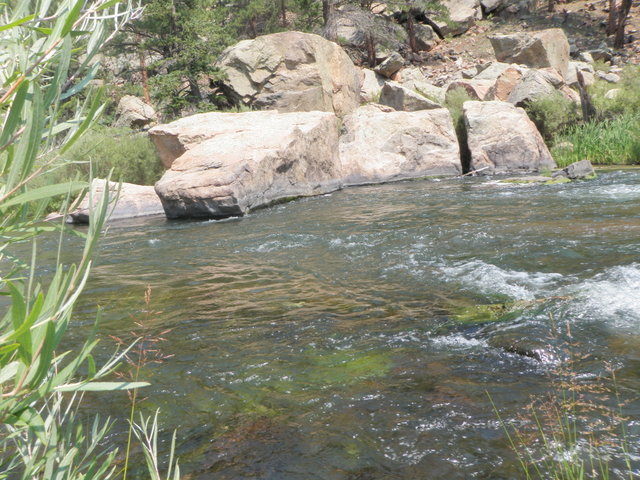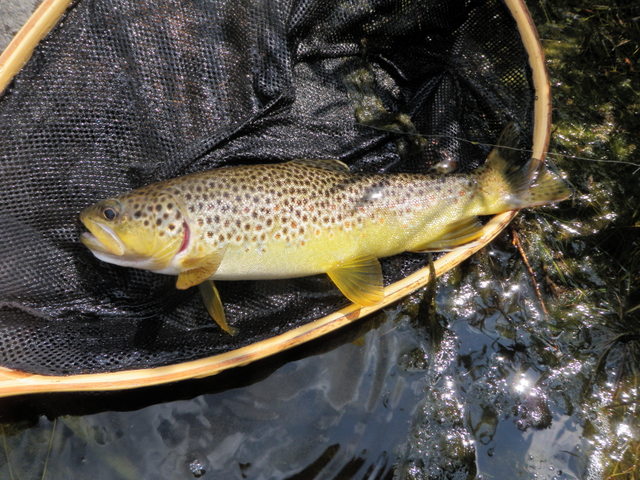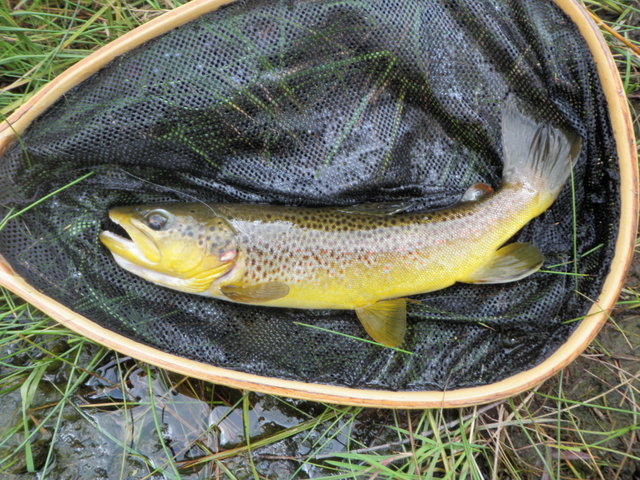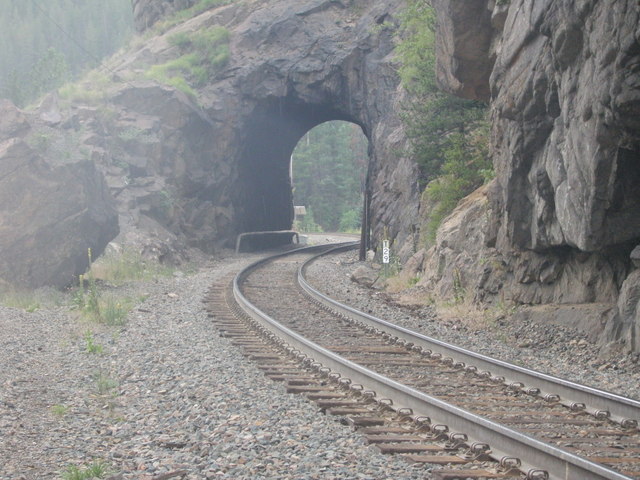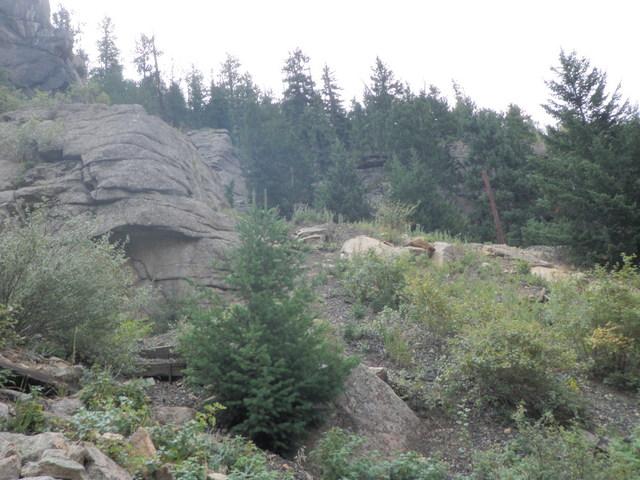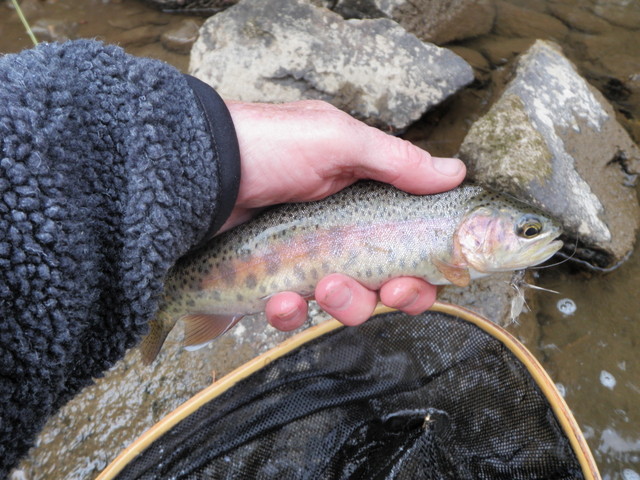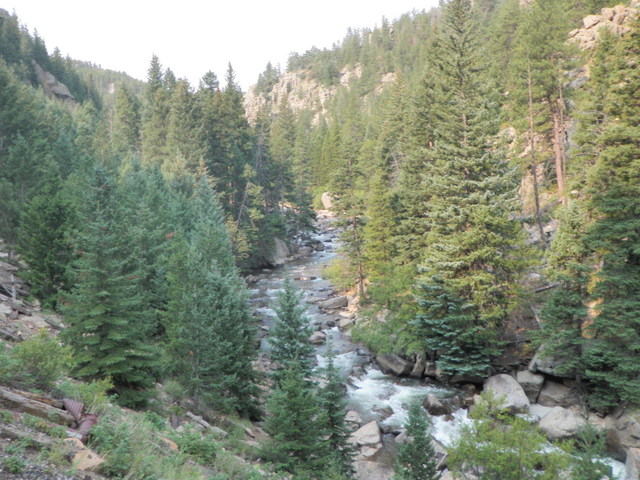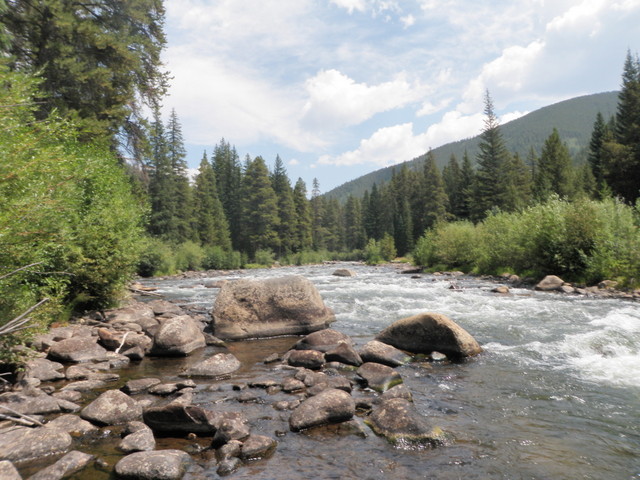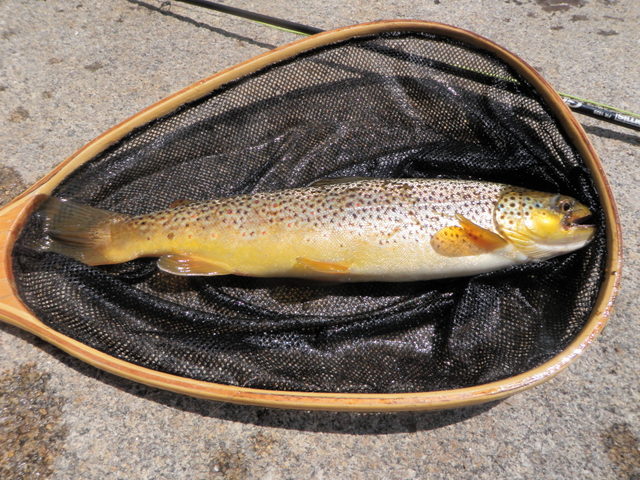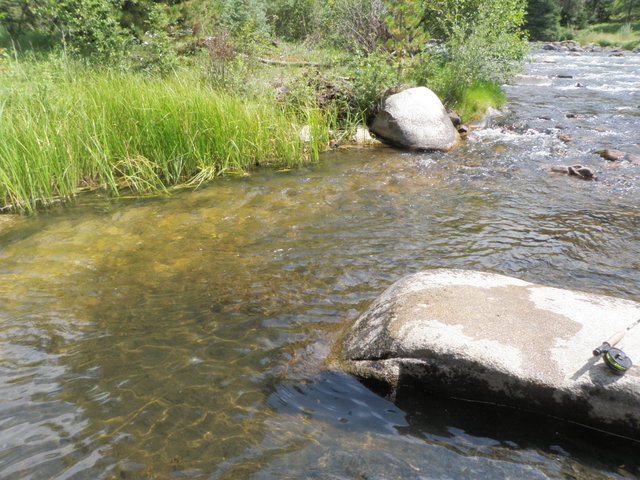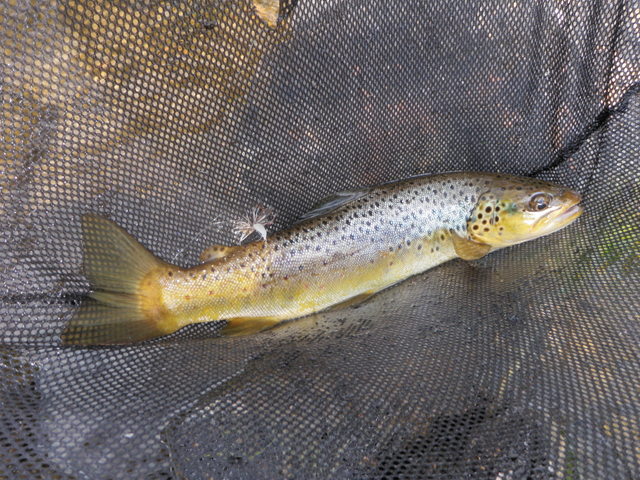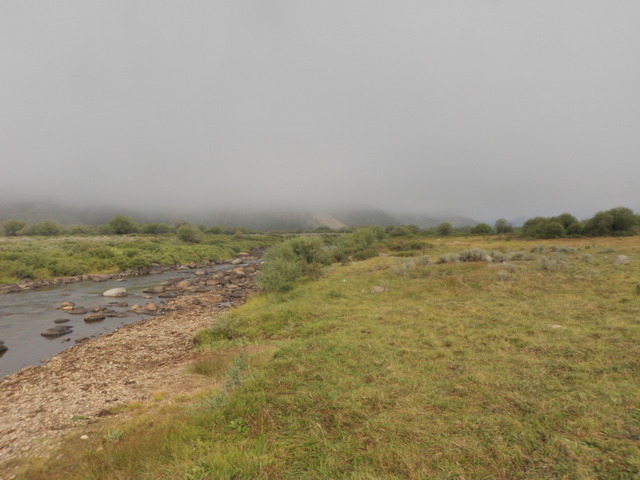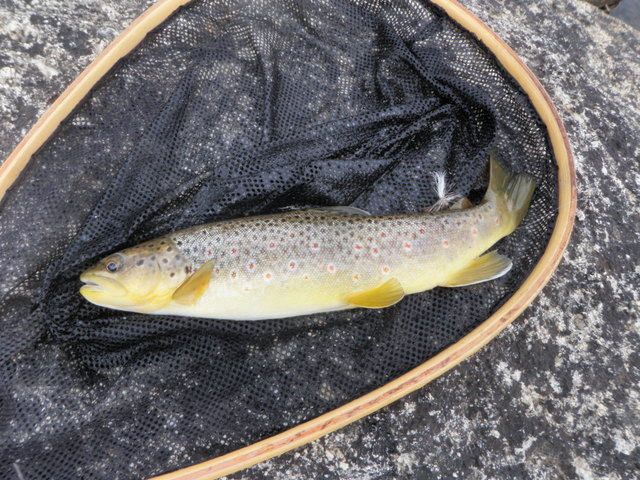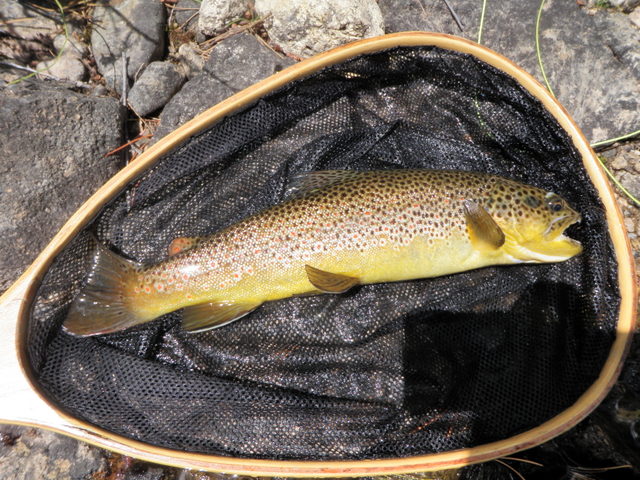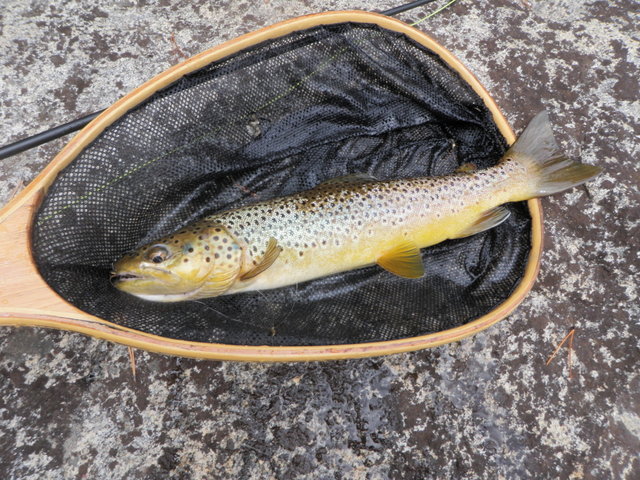Time: 11:00AM – 4:00PM
Location: Soward Ranch near Creede CO
Fish Landed: 11
Red Mountain Creek 09/01/2012 Photo Album
Growing up in as a child in the 50’s exposed me to numerous popular TV westerns including Roy Rodgers, Gene Autry and my favorite The Lone Ranger. I was a huge fan and wore my toy holster with six shooters on both sides with pride. A magical place in many of these shows was the Rio Grande, and it always seemed like the bad guy’s goal was to cross the Rio Grande. As I travel and fish in Colorado, I’m still amazed that I live in a land that looks so much like the landscapes I worshipped as a kid as I watched western movies and television shows.
Jane and I decided to make a trip to Creede, CO for Labor Day weekend. Twice in the 90’s we made this excursion with the kids and had a great time camping at the Broadacres Traveling Teepee. We checked the national forest campgrounds in the area, and they didn’t take reservations so we felt it was risky to make the 5+ hour drive on Labor Day weekend without a guaranteed place to camp. Jane began checking lodging online and found a ranch 12 miles southwest of Creede with small cabins for rent at $90/night. We decided to reserve a cabin for Friday, Saturday and Sunday night. In addition, Jane remembered the Creede Repertory Theater, so she reserved tickets for the Saturday night performance of The Ghost Writer.
Jane had to work on Friday morning, so I stayed home and packed the car and did some last minute shopping until she arrived at approximately 12:30PM. We gathered the last minute food and departed Denver by 1:45. Unfortunately somewhere along I25 before Colorado Springs we realized that we forgot to load our bikes for the weekend. The traffic on the Friday of Labor Day weekend was fairly heavy and we encountered traffic congestion at several locations; however, we persisted and arrived at the Soward Ranch at 7:30.
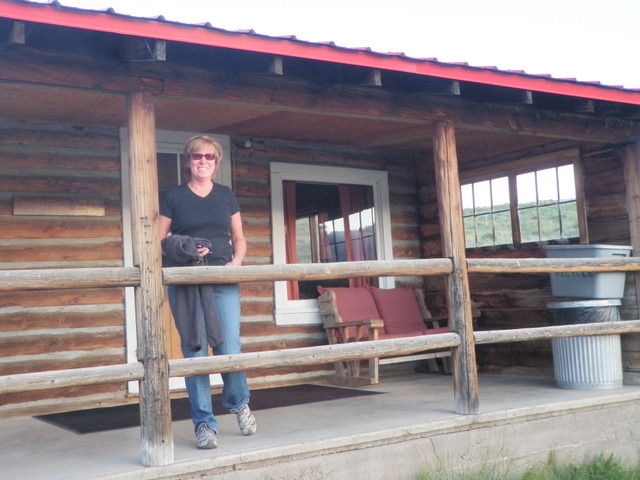
Jane on Cabin Porch
Kate Lamb greeted us and directed us to our cabin and told us of some of the history of the ranch. Unbeknownst to me, Jane reserved a cabin on a fishing ranch. As it turned out, there were three or four stocked ponds and private water on the Rio Grande and two smaller tributaries; Red Mountain Creek and Trout Creek. Kate told us that Trout Creek was extremely difficult and only the very best fly fishermen could catch fish there.
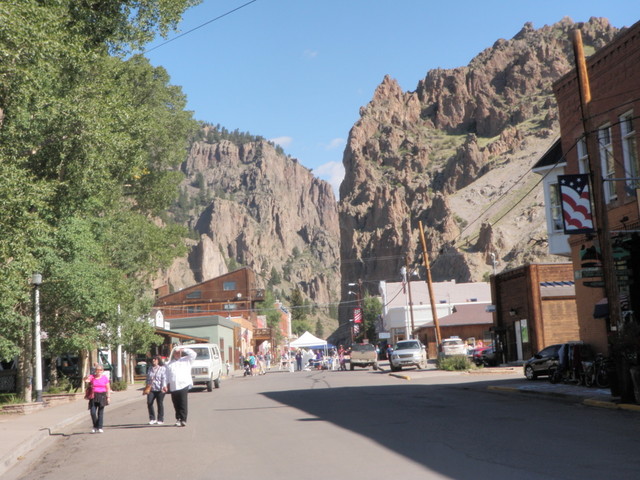
Main Street of Creede, CO
We were both hungry so we returned to Creede and ate dinner at the The Far Dog Restaurant. After dinner we returned to the cabin and as we sat in the main room, a combination kitchen/living room, we heard an animal in the wall between our room and the bedroom. We concluded it was probably a mouse, but the rustling noise continued into the night. In fact it was the last thing I remember before falling asleep.
Jane prepared a delicious breakfast of eggs and bacon on Saturday morning, and after breakfast I went out on the porch to check the air temperature, and a huge hound dog was standing by the door wagging his tail. I guessed he was seeking affection so I patted him on the head and invited him to follow me to the car. But the big guy was having none of it and remained by the door and interjected a few loud hound dog howls. I went inside to get something and when I returned to the porch the hound was still there with nostrils flared and drool flowing from his mouth. At this point I figured it out; he smelled Jane’s delicious bacon and was waiting for a handout. He didn’t care about me or Jane or pats or affection; he just wanted the meat. I named him Bacon for the rest of the weekend.
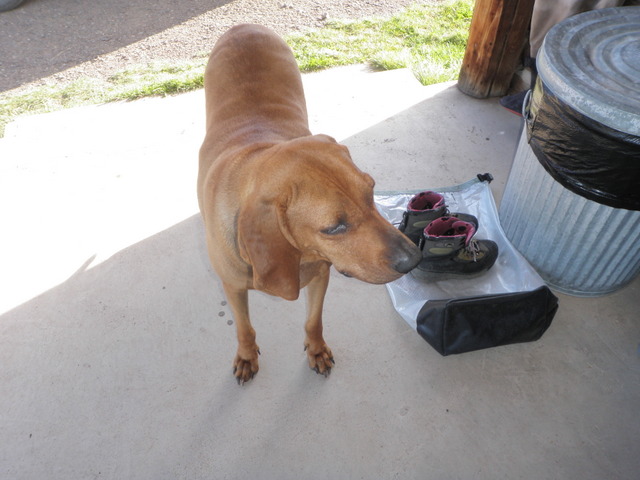
He Liked Bacon More Than Us
As one can imagine, I was quite anxious to try the private ranch water on Saturday and Jane realized that. We decided to make an early trip to Creede and pick up a few items at the supermarket and then rent bikes for the day. Jane discovered that we could rent a bicycle at the San Juan Outfitter shop for $38 for two days, so we both rented mountain bikes, threw them in the back of the Santa Fe and returned to the cabin. Jane would use her mountain bike to explore the dirt roads that surrounded the ranch, and I’d drive the Santa Fe to the “holy water” as described by Kate, the confluence of Trout Creek, Red Mountain Creek, and the Rio Grande. I told Jane I’d return to the cabin by 1PM for lunch, and then we’d plan the afternoon from there.
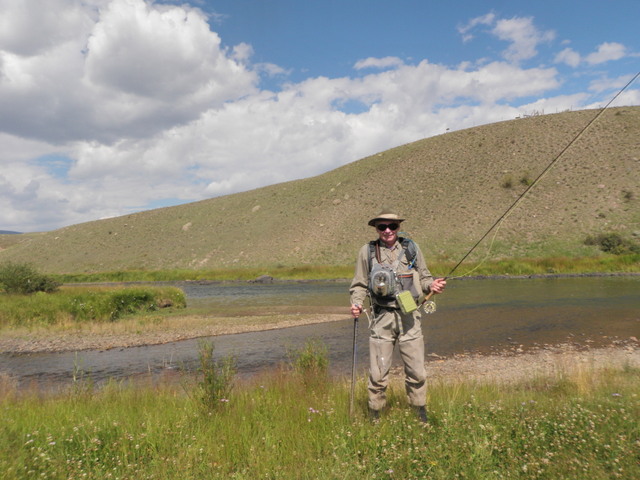
Dave at Junction of Rio Grande and Trout Creek
I drove out the dirt lane from the ranch to the forest road and then made a left just before the bridge that crosses Red Mountain Creek. This took me on a somewhat rough lane with two dirt tire tracks and after .75 miles I arrived at a grassy parking area next to the Rio Grande. To the south of my car, Trout Creek entered the main river and just to the north Red Mountain Creek surged into the huge main pool. Just above the confluence the Rio Grande ran over some rocks and shallow riffles and then dropped quickly into a huge deep pool that then extended for thirty yards downstream. As I gazed at this beautiful location, I couldn’t believe that I was about to fish on private water of the mythical Rio Grande, the river frequently mentioned in the westerns of my youth.
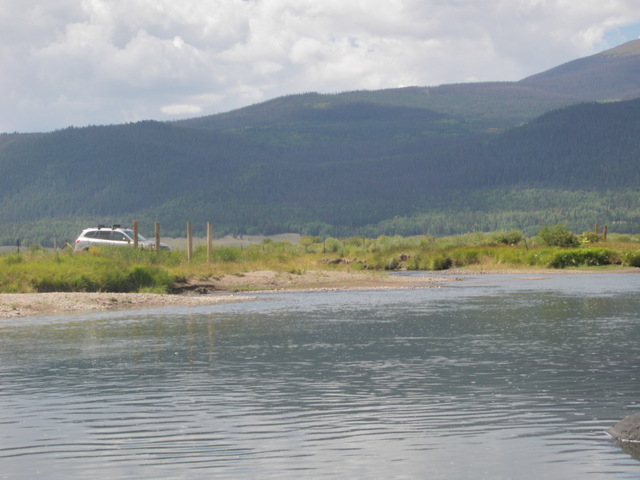
Santa Fe Looking Like Auto Commercial
I rigged up my Sage 4 weight rod with a Chernobyl ant and beadhead hares ear on a relatively short 18 inch dropper and began casting to the current seam created by the merging of Red Mountain Creek and the Rio Grande. Nothing happened so I moved up the river and cast to the seam created by Trout Creek. Again there was no reaction so I waded across Trout Creek and moved up along the Rio Grande to the more shallow riffles that fed into the huge pool. At this time Jane arrived on her rental bicycle, and she watched as I fished for a bit, but I wasn’t catching anything and she was anxious to continue on her bike ride.
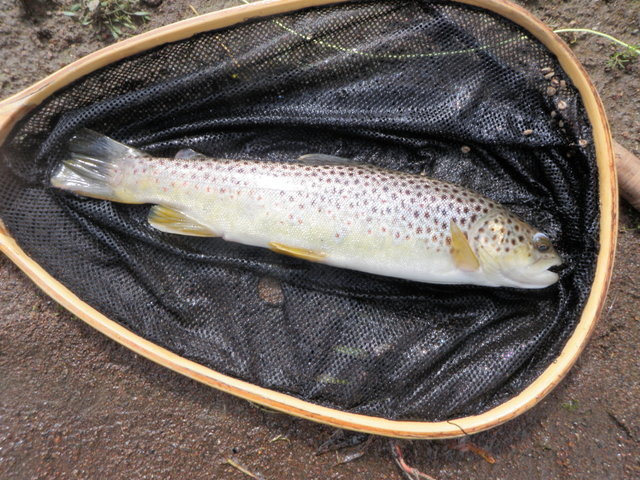
Brown from Rio Grande
I worked some casts across the riffles and eventually fired a 25 foot cast two thirds of the way across. As the Chernobyl bounced down the riffles and next to an area where the bottom of the river looked darker either due to a rock or dark colored vegetation, the foam fly dipped and I set the hook and fought and landed a feisty 13 inch brown. I called out to Jane, but she had just departed and was evidently out of calling range, so I waded to the bank and photographed my first Rio Grande trout of the weekend.
I fished down the run a bit further hoping that the beadhead hares ear would attract some more nice fish, but a trend did not develop. There was some nice pocket water along the opposite bank, so I crossed above the shallow riffle and walked down a path along the northwest bank to the middle of the long pool where some large protruding boulders first surfaced. I worked back up along the ten feet of water along the bank almost certain that I’d entice some nice browns to rise to the Chernobyl or grab the dangling hares ear, but my confidence was misplaced.
I crossed back to my starting point and looked at Trout Creek. The words of Kate about the necessity of being an expert fly fisherman rang in my ears. I began walking up along the left bank and the initial stretch was wide and shallow with no holding water for trout. I covered 20 to 30 yards of stream before I reached a spot with deep holes and a high eroded bank. I climbed to the top of the bank and looked down and began flicking the Chernobyl into the deeper water, but as I did so some gusts of wind swept across the sagebrush and caused my flies to tangle. The deep holes were surrounded by long flowing aquatic weeds, and as I tried to patiently untangle the wind-aided mess, I spotted a nice fish in the deepest spot between the aquatic growth. Finally I was free and ready to cast, but I couldn’t spot the fish anywhere as it probably retreated to the weeds. I made ten casts but finally gave up and moved on.
At another long smooth pool I spotted two nice browns hanging next to an aquatic weed bed right next to the bank. These fish must have spotted me from a long distance, because they were gone by the time I launched a long cast. The strong wind was making it next to impossible to check the cast high and flutter the ant down to the water. At one point I did manage to get a refusal to the Chernobyl, but after a half hour of fruitless stalking and casting, I surrendered to Trout Creek and walked back down the stream to the confluence pool.
What should I do next? I had another 45 minutes before I needed to meet Jane, so I decided to explore Red Mountain Creek. Kate mentioned this stream but didn’t dwell on it like Trout Creek and the Rio Grande. There was a barbed wire fence that crossed the stream five feet above the confluence, so I went around the fence and began fishing upstream. In a short amount of time I landed a chunky 12 inch brown on the trailing hares ear, and then shortly thereafter I hooked and played a fish that felt rather heavy, but I never got a good look at it before it freed itself.
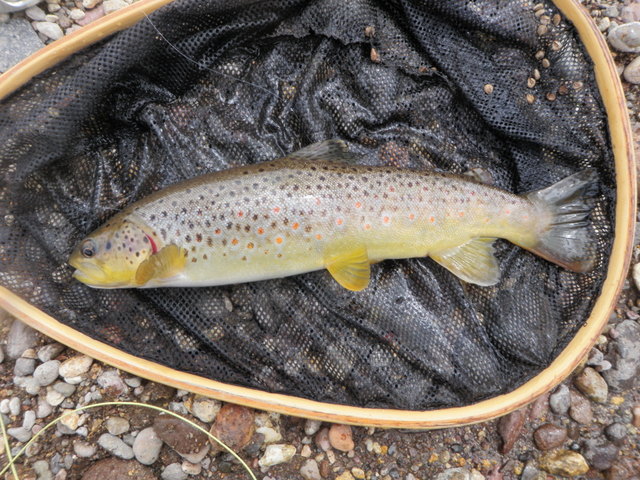
Nice Brown from Red Mountain Creek
Before I departed for lunch I landed another three brown trout, and they were all nice fish that exceeded my expectations for a stream that rarely spanned more than six feet. By now I was pretty excited about the prospect of fishing more of Red Mountain Creek, so I was hoping to sell Jane on this option for the afternoon.
Jane was already on the porch and had just returned from her bike ride when I arrived. She told me about her ride with a four mile uphill climb and never reaching her destination of Love Lake, but she was pretty tired so she would be happy to return to Creede and check out the Salsa Festival. With this plan in place she dropped me off along the lane to the Rio Grande, and we agreed to rendezvous at 4PM at the bridge crossing over Red Mountain Creek. I had two hours to explore Red Mountain Creek from my pre-lunch ending point to the bridge crossing.
I walked across the sagebrush and willow field and found my ending point on Red Mountain Creek as Jane turned around and returned to Creede. As the Chernobyl wasn’t producing a lot of action in the morning, I decided to swap it for a parachute hopper with a hares ear body and I retained the beadhead hares ear dropper. I began casting upstream in the likely deeper holding locations and it wasn’t long before a fish mauled the hopper, and I was attached to a fine fish. I caught a glimpse of a brown and it raced back and forth in the tight small stream space and attempted to go under a bank several times. I held fast and let the fish run several additional times before tiring it out and sliding my net underneath. I spread it out on my net to photograph and it extended beyond the net opening by two inches; a 17″ beauty in a small six foot wide stream!

17″ Brown from Tiny Red Mountain Creek Settled Down
I made steady progress upstream and gradually began picking a couple more medium sized trout in the twelve inch range. These were nice chunky fish for such a small stream environment. There were limited prime fish holding locations, so I covered a fair amount of stream between stops without even casting my flies.
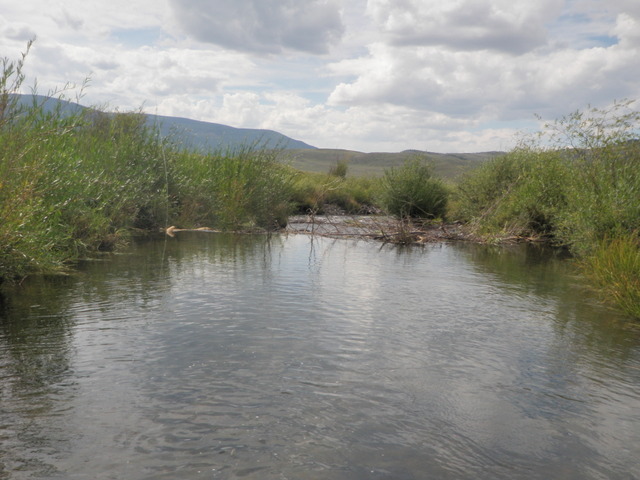
Beaver Pond Yielded Two Nice Trout
With around 45 minutes remaining I approached a beaver pond and began to circle around it, but I noticed the water was clear and flowed over a cobble bottom. Usually I stay away from beaver ponds because they have mucky bottoms and are a difficult quagmire to wade through and around, but this appeared to be a new one, and it created a nice oversized pool compared to the previous fishing spots on Red Mountain Creek. I retreated to a point just above the dam and positioned to make some upstream casts to where the stream still had a bit more current. I probably should have gone below the dam and prospected the area I was standing in, but it was too late to recover that opportunity.
I shot a couple casts upstream and on perhaps the third with the hopper bobbing back toward me around ten feet away, it dipped and I set the hook and a rainbow trout rocketed into the air. It turned out to be a 12 inch fish but what a strong fighter as it demonstrated its jumping prowess with at least four stream clearing leaps. I released the beauty and dried the fly and applied more floatant and shot another cast five feet above where I’d just hooked the rainbow. Wham! The hopper suddenly took a dive, and I set the hook and played another strong fish, this one a fourteen inch buttery colored brown. I photographed this beauty before continuing to search for my tenth fish of the day before my fishing time was up.
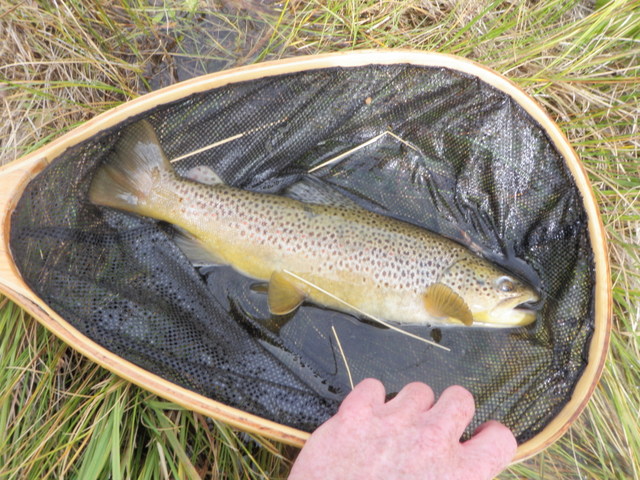
Another Fine Brown from Red Mountain Creek
I had around twenty minutes remaining and the bridge was in sight upstream, but there was plenty of water remaining. After ten minutes of prospecting I landed a small nine inch brown on the beadhead hares ear and I was pleased to reach double digits. I began to move more quickly and skip marginal spots and flick flies in only areas with more depth. By 3:50 I was only twenty yards below the bridge and a few small runs around three feet deep were ahead of me. I cast the hopper/dropper to the right channel first, but no response occurred. I flicked the flies to the left run and let it drift to the tail of the run and as I lifted the flies to recast I felt a jarring weight. I didn’t have to set the hook because I was already in that motion, and immediately I was playing a hot rainbow that cavorted about the small living space. It was a fun few minutes before I netted and photographed this active rainbow.
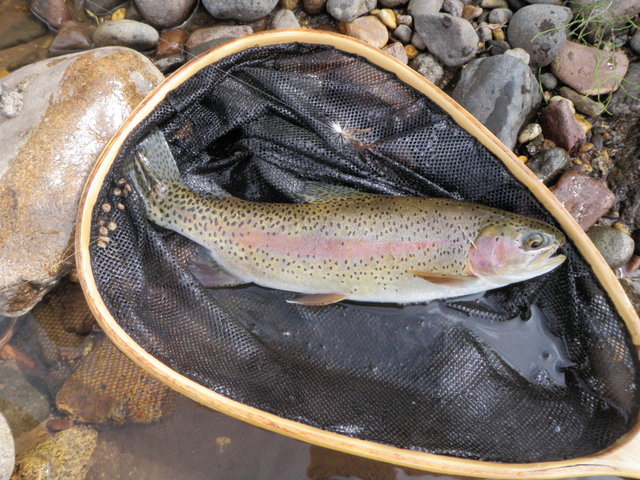
Last Fish on Saturday was Nice Rainbow
When I reached the bridge I realized there was a barbed wire fence between me and the road, so I walked under the bridge and was able to climb back to the road from the other side even though there was a private property sign 15 yards further up the stream. I looked around for Jane, but she wasn’t present so I began hiking up the road. After a fifteen minute walk I arrived at the cabin just as Jane drove up in the Santa Fe. What a great afternoon of small stream fishing on Red Mountain Creek at Soward Ranch!
On Saturday evening Jane and I enjoyed the performance of The Ghost Writer at the Creede Repertory Theater.
Like this:
Like Loading...

